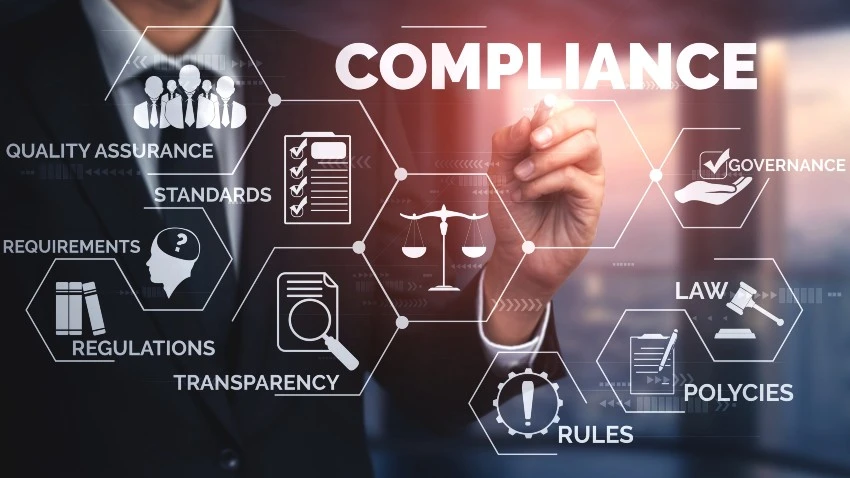In recent years, the importance of environmental sustainability has surged to the forefront of public consciousness, driven by increasing awareness of climate change, resource depletion, and environmental degradation. This shift has prompted governments worldwide to implement stringent environmental regulations aimed at curbing pollution, conserving resources, and promoting sustainable development. For businesses, these regulations represent both challenges and opportunities. This article explores the intersection of environmental regulations and corporate responsibility, outlining strategies for businesses to adopt sustainable practices that not only ensure compliance but also drive long-term value and positive environmental impact.
Contents
The Landscape of Environmental Regulations
Environmental regulations are laws and policies designed to protect the environment by controlling pollution, managing natural resources, and promoting sustainable practices. These regulations vary by country and region but generally encompass several key areas:
Air and Water Quality
Regulations aimed at protecting air and water quality include:
Emissions Standards: Limits on the amount of pollutants (such as carbon dioxide, sulfur dioxide, and nitrogen oxides) that can be released into the air by industrial facilities, vehicles, and other sources.
Water Pollution Controls: Restrictions on the discharge of pollutants into water bodies, including requirements for wastewater treatment and the prevention of chemical runoff.
Waste Management
Regulations in this area focus on reducing the environmental impact of waste through:
Waste Reduction: Mandates for businesses to minimize waste generation and promote recycling and reuse.
Hazardous Waste Management: Strict controls on the handling, storage, and disposal of hazardous materials to prevent contamination and harm to human health and the environment.
Resource Conservation
Conservation regulations aim to promote the sustainable use of natural resources, including:
Energy Efficiency: Requirements for businesses to improve energy efficiency in operations and products, often through the use of energy-efficient technologies and practices.
Water Conservation: Measures to reduce water consumption and promote efficient water use, particularly in industries with high water demands.
Climate Change Mitigation
To address the global challenge of climate change, many countries have implemented regulations that include:
Carbon Emissions Reduction: Targets for reducing greenhouse gas emissions, often through mechanisms such as carbon pricing, cap-and-trade systems, and renewable energy mandates.
Climate Reporting: Obligations for businesses to disclose their greenhouse gas emissions and climate-related risks and opportunities.
Corporate Responsibility and Environmental Sustainability
Corporate responsibility encompasses a company’s commitment to ethical behavior and sustainable practices that benefit society and the environment. Environmental sustainability, as a core component of corporate responsibility, involves integrating environmental considerations into business operations and decision-making processes. Key elements of corporate environmental responsibility include:
Environmental Stewardship
Businesses are expected to act as stewards of the environment by minimizing their environmental impact and promoting sustainability. This can be achieved through:
Sustainable Resource Use: Adopting practices that reduce resource consumption and promote the use of renewable resources.
Pollution Prevention: Implementing measures to prevent pollution and reduce emissions, waste, and other environmental impacts.
Compliance and Beyond
While compliance with environmental regulations is a fundamental aspect of corporate responsibility, leading businesses often go beyond mere compliance to adopt proactive sustainability strategies, such as:
Voluntary Initiatives: Participating in voluntary environmental programs and initiatives, such as the United Nations Global Compact, which encourage businesses to adopt sustainable practices.
Green Certifications: Pursuing certifications and standards (such as ISO 14001 for environmental management systems) that demonstrate a commitment to sustainability and continuous improvement.
Stakeholder Engagement
Engaging with stakeholders, including customers, employees, investors, and communities, is crucial for building trust and promoting transparency. Effective stakeholder engagement involves:
Sustainability Reporting: Regularly disclosing environmental performance and sustainability initiatives through reports and communications.
Collaborative Partnerships: Working with stakeholders to address environmental challenges and develop innovative solutions.
Innovation and Leadership
Leading businesses recognize that sustainability can drive innovation and competitive advantage. By investing in sustainable technologies, products, and processes, companies can:
Enhance Efficiency: Improve operational efficiency and reduce costs through resource conservation and waste reduction.
Create Value: Develop new products and services that meet the growing demand for sustainable solutions.
Build Reputation: Strengthen brand reputation and customer loyalty by demonstrating a commitment to sustainability.
Strategies for Sustainable Business Practices
Adopting sustainable business practices requires a strategic approach that integrates environmental considerations into all aspects of operations and decision-making. The following strategies can help businesses navigate environmental regulations and enhance corporate responsibility:
1. Conduct Environmental Assessments
Conducting thorough environmental assessments is the first step in identifying and mitigating environmental risks. Key actions include:
Environmental Impact Assessments (EIAs): Evaluate the potential environmental impacts of projects and operations and develop mitigation measures.
Life Cycle Assessments (LCAs): Assess the environmental impacts of products throughout their life cycle, from raw material extraction to disposal.
2. Develop a Sustainability Plan
A comprehensive sustainability plan outlines the goals, strategies, and actions needed to achieve environmental sustainability. Key components include:
Sustainability Goals: Set clear, measurable goals for reducing environmental impacts, such as greenhouse gas emissions, waste, and water use.
Action Plans: Develop detailed action plans for achieving sustainability goals, including timelines, responsibilities, and resources.
3. Implement Energy and Resource Efficiency Measures
Improving energy and resource efficiency can significantly reduce environmental impacts and operational costs. Key measures include:
Energy Audits: Conduct energy audits to identify opportunities for improving energy efficiency and reducing consumption.
Renewable Energy: Invest in renewable energy sources, such as solar, wind, and biomass, to reduce reliance on fossil fuels and lower carbon emissions.
Water Efficiency: Implement water-saving technologies and practices, such as low-flow fixtures, water recycling, and efficient irrigation systems.
4. Adopt Sustainable Supply Chain Practices
Sustainable supply chain practices ensure that environmental considerations are integrated into procurement and logistics. Key actions include:
Supplier Engagement: Collaborate with suppliers to promote sustainable practices and ensure compliance with environmental standards.
Sustainable Sourcing: Source materials and products from suppliers that adhere to sustainable and ethical practices.
Transportation Efficiency: Optimize transportation routes and methods to reduce emissions and improve fuel efficiency.
5. Promote Waste Reduction and Circular Economy
Adopting waste reduction and circular economy principles can minimize waste generation and promote resource recovery. Key strategies include:
Reduce, Reuse, Recycle: Implement programs to reduce waste, encourage reuse, and promote recycling within operations and among customers.
Product Design: Design products for durability, repairability, and recyclability to extend their lifespan and reduce waste.
Circular Business Models: Explore circular business models, such as product-as-a-service or take-back schemes, to promote resource recovery and recycling.
6. Enhance Environmental Management Systems
Robust environmental management systems (EMS) provide a framework for managing environmental impacts and driving continuous improvement. Key actions include:
ISO 14001 Certification: Achieve ISO 14001 certification to demonstrate a commitment to environmental management and continuous improvement.
Monitoring and Reporting: Implement systems for monitoring and reporting environmental performance, including key performance indicators (KPIs) and sustainability metrics.
Training and Awareness: Provide training and awareness programs to employees to promote environmental responsibility and best practices.
7. Engage in Sustainability Reporting and Communication
Transparent sustainability reporting and communication build trust with stakeholders and demonstrate a commitment to environmental responsibility. Key actions include:
Sustainability Reports: Publish regular sustainability reports that detail environmental performance, initiatives, and progress toward goals.
Stakeholder Engagement: Engage with stakeholders through surveys, meetings, and collaborations to understand their concerns and expectations.
Communication Campaigns: Develop communication campaigns to raise awareness of sustainability efforts and encourage responsible behavior among employees, customers, and communities.
8. Innovate for Sustainability
Innovation is a key driver of sustainability, enabling businesses to develop new solutions and stay ahead of regulatory requirements. Key strategies include:
Research and Development: Invest in research and development (R&D) to create sustainable products, technologies, and processes.
Partnerships and Collaborations: Collaborate with academic institutions, research organizations, and industry partners to drive innovation and share best practices.
Pilot Projects: Implement pilot projects to test and refine innovative solutions before scaling them across operations.
Case Studies and Best Practices
Case Study 1: Unilever’s Sustainable Living Plan
Unilever, a global consumer goods company, has been a leader in corporate sustainability through its Sustainable Living Plan. Key initiatives include:
Sustainable Sourcing: Unilever sources 100% of its agricultural raw materials sustainably, supporting farmers and promoting biodiversity.
Waste Reduction: The company has achieved zero waste to landfill across its manufacturing sites and promotes recycling and waste reduction among consumers.
Climate Action: Unilever has set ambitious targets to reduce greenhouse gas emissions, including transitioning to 100% renewable energy and improving energy efficiency.
Case Study 2: Patagonia’s Environmental Responsibility
Patagonia, an outdoor apparel company, is renowned for its commitment to environmental responsibility. Key strategies include:
Environmental Activism: Patagonia actively engages in environmental activism, supporting grassroots organizations and advocating for environmental protection policies.
Sustainable Products: The company designs products for durability and repairability, promotes recycling through its Worn Wear program, and uses sustainable materials such as organic cotton and recycled polyester.
Transparency: Patagonia provides transparency about its environmental and social impact through detailed reports and communications with stakeholders.
Best Practice 1: Integrated Reporting
Integrated reporting combines financial and non-financial performance, providing a holistic view of a company’s impact and value creation. Key benefits include:
Enhanced Transparency: Provides stakeholders with comprehensive information about a company’s environmental, social, and governance (ESG) performance.
Informed Decision-Making: Supports better decision-making by integrating sustainability considerations into business strategy and operations.
Best Practice 2: Green Building and Sustainable Design
Green building and sustainable design principles promote environmental sustainability in construction and operations. Key strategies include:
LEED Certification: Achieving Leadership in Energy and Environmental Design (LEED) certification for buildings demonstrates a commitment to sustainability and energy efficiency.
Sustainable Materials: Using sustainable and low-impact materials in construction and renovation projects.
Energy and Water Efficiency: Implementing energy-efficient lighting, heating, cooling, and water-saving technologies to reduce environmental impact.
Environmental regulations and corporate responsibility are integral to achieving sustainable business practices and addressing the global challenges of climate change, resource depletion, and environmental degradation. By adopting proactive strategies such as conducting environmental assessments, developing comprehensive sustainability plans, improving energy and resource efficiency, and promoting sustainable supply chain practices, businesses can navigate regulatory requirements and enhance their environmental performance.
Furthermore, engaging in sustainability reporting, innovating for sustainability, and embracing best practices such as integrated reporting and green building can drive long-term value, build stakeholder trust, and contribute to a more sustainable future. Ultimately, businesses that prioritize environmental responsibility and sustainability are better positioned to thrive in a rapidly changing world, creating positive impacts for society, the environment, and their bottom line.


